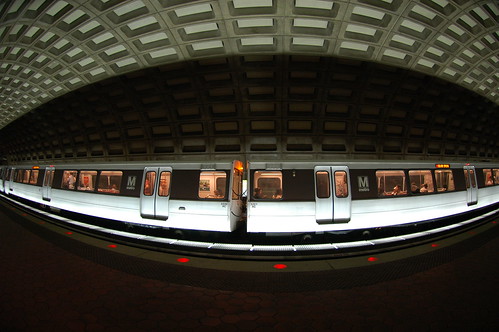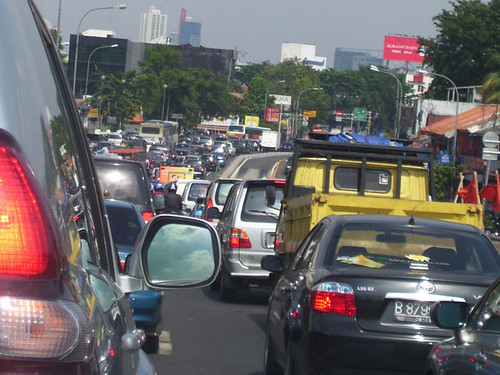(Source: Minnesota Public Radio, The Hill, The Trucker, Detroit Free Press, Transportation for America)

Image Courtesy:USDOT Secretary Ray LaHood's Blog - Fast Lane
Legislative Journey Begins:
Congressman Jim Oberstar’s transportation bill starts its legislative journey today with a draft session scheduled in a House of Representatives subcommittee.
It’s the one of the first steps toward a vote for the bill, which would nearly double current spending. The Obama administration has proposed postponing reform, but Oberstar says waiting dooms the country to years of delay on transportation projects.
Oberstar’s Surface Transportation Authorization Act would provide $337 billion in funding for highway construction, $100 billion for public transit and $50 billion to build a nationwide high-speed rail system–a grand total of nearly $500 billion over six years.
Funding for the bill remains sketchy, though Oberstar promises details as it progresses. There’s been no talk of increasing the federal gasoline tax which hasn’t been raised for 16 years.
Oberstar rails against the Obama administration position, saying an 18-month delay, given how Congress does its work, translates into a four-year wait for federal money from a new federal transportation bill. Oberstar’s timeline for finishing work on a new federal transportation bill is ambitious. He wants a vote no later than just after Labor Day.
LaHood told a Senate Appropriations transportation panel last week that he wants to work in the 18-month extension for the kinds of program changes that lawmakers seek.
“Our number one priority is to fix the Highway Trust Fund, to pay for it, to find money, and along the way here if we can have the discussions about these other things, I think we should,” LaHood said.
But Sen. Patty Murray, a Washington Democrat and the committee’s chairman, said: “Conversations are great; passing legislation is hard.” She said she was “concerned about some of the lack of details … You’re offering a general framework for us, but we can’t wait very long for a proposal.”
Unlikely Ally – K Street:
Rep. Jim Oberstar (D-Minn.) has a powerful ally in his battle with the White House over the highway bill: K Street.
Trade associations, unions and business coalitions are getting behind the House Transportation Committee chairman in his push to complete the $450 billion measure before the fiscal year ends on Sept. 30. The Obama administration has argued the transportation reauthorization bill is a bridge too far for an already jam-packed legislative agenda and wants to extend the current law at least 18 months before Capitol Hill can take on new reforms.
But lobbyists are arguing that the debate over how best to pay the increased transportation funding Oberstar is proposing — whether it is through raising the tax on gasoline or taxing vehicle mileage — cannot wait any longer.
But the administration has opposed lawmakers who wish to raise the gas tax to pay for the new transportation bill. LaHood and others argue the new tax hike would be overly burdensome on the pocketbooks of ordinary Americans during the recession.
Lobbyists believe the legislation, which will help fund repairs not only to highways but to transit systems and railroads, will provide a boost to the nation’s economy, much like the stimulus package was designed to do.
For his push to finish the bill before the end of the fiscal year, Oberstar can expect to find support among many of the trade associations that have been lobbying the transportation reauthorization this year. Like AAPA and LIUNA, the American Association of State Highway and Transportation Officials and the Associated General Contractors of America are also supportive of the Minnesota Democrat’s desire to complete the bill in 2009, according to statements they released last week.
Many praised several reforms that were included in Oberstar’s blueprint released last week, including creating a Transportation Department Office of Intermodalism to better organize the nation’s transportation system and a national infrastructure bank to fund transportation projects.
Strong provisions for monitoring drug and alcohol abuse by truckers
The draft of the new highway reauthorization bill authored primarily by Rep. James Oberstar, chairman of the House Transportation and Infrastructure Committee contains strong language requiring the Secretary of Transportation to establish a clearinghouse for records relating to alcohol and controlled substances testing of commercial motor vehicle operators.
It’s a clearinghouse long desired by federal officials and trucking executives and would be designed to keep repeat substance abuse offenders from jumping from company to company.
The clearinghouse would be a repository of records relating to violations of the testing program by individuals submitted to the DOT.
The bill requires the clearinghouse to be in operation not later than one year after the enactment of the new highway bill.
Under the present system, a CDL holder can fail a drug test and be fired from his or her present employer, but is not required to tell a prospective new employer about the failed test.
D.C. Metro Crash Spurs Transit Funding Debate
Public transit advocates seized on Monday’s commuter rail crash in Washington to make the case for overhauling the country’s transportation system. Authorities were still searching the wreckage Tuesday when Transportation for America, a coalition of interest groups and local officials, cited the deadliest crash in the Metro’s 33-year history to make the case for advancing a new transit authorization bill on Capitol Hill this year.
“In the big picture, what we can say is that we have underinvested in taking care of our infrastructure, roads, bridges and public transportation,” said James Corless, director of Transportation for America.
Lawmakers from around the Washington area also spoke of the need to pay for rail projects in the wake of the crash, which killed nine people and injured 76, although some cautioned not to draw conclusions before investigators determine what led the two trains on the red line to collide.
Del. Eleanor Holmes Norton (D-D.C.) called for a congressional hearing Tuesday to help determine how the crash occurred.
Norton, after meeting with officials of the National Transportation Safety Board, expressed outrage that the older car in the crash wasn’t retired, as those officials had recommended years ago. She noted that Congress once heard safety officials testify for more funding to maintain the Metrorail system, and that appropriators have failed to fully fund their request.
“Congress had the ultimate wake-up call yesterday,” she said. “The only appropriate response is to begin to eliminate the crash-unworthy cars with this year’s appropriations.”













